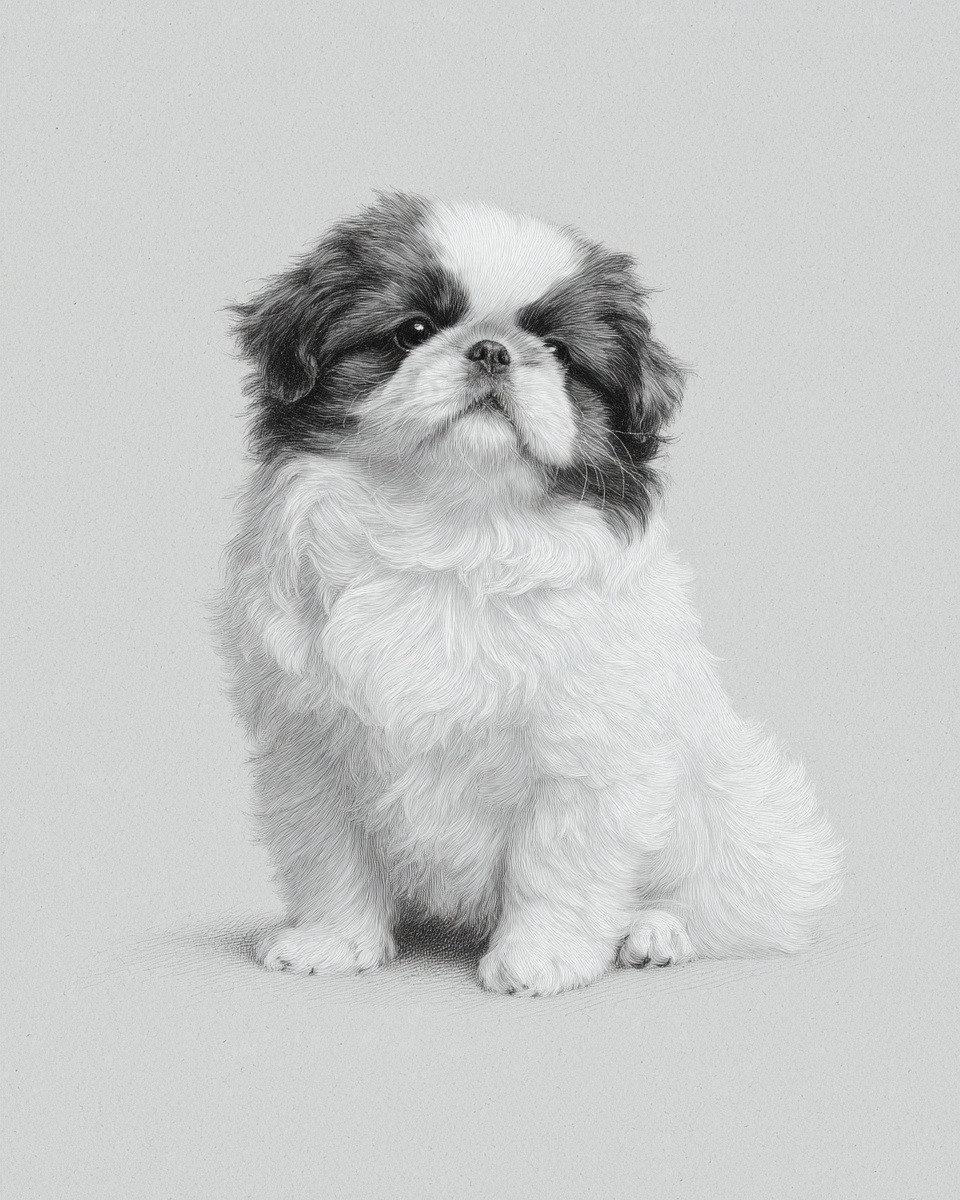Japanese Chin

Description
The Japanese Chin is a small, elegant toy breed with a history stretching back to ancient China. Brought to Japan in the 7th century, they became treasured companions of aristocrats and royalty. Their delicate build and expressive face give them a regal air. They weigh between 7 and 11 pounds, making them perfect for lap time. These dogs have a calm, confident personality. They bond tightly with their families and love quiet attention. They’re gentle and well-mannered but can be shy around strangers. Despite their small size, they carry themselves with poise and often show a cat-like way of grooming and pawing at things. Their presence is quiet and refined, fitting well in homes with seniors or families who want a calm companion.
Grooming
The Japanese Chin’s coat is medium-length, silky, and straight, with feathering on the ears, legs, and tail. It sheds very little but mats easily, especially behind the ears and under the armpits. Brush or comb your Chin 3 to 5 times a week to keep tangles at bay and maintain that soft shine. Pay special attention to the mane around the neck and chest where mats form quickly. Trim the feet and sanitary areas lightly between full grooms to keep your dog neat. Bathe every 3 to 6 weeks, making sure to dry the coat straight to avoid tangles. A full groom every 4 to 6 weeks keeps the coat in top shape. Colors vary from Black & White to Red & White, with some having red markings that need gentle care to avoid staining. Keep the white areas clean with spot wipes if needed. - Brush 3–5 times weekly - Detangle ears and armpits - Light trim between grooms - Bathe every 3–6 weeks - Full groom every 4–6 weeks Pro tip: Use a wide-tooth comb first to loosen mats, then follow with a soft brush to smooth the coat without pulling.
Learn the Silky routine:
→ Complete Silky Grooming Guide
Walking
Japanese Chins don’t need long walks. About 25 minutes once a day suits them well. They prefer a slow, calm pace that lets them sniff and explore without rushing. One solid session keeps them happy and balanced. A typical walk might start with a gentle 10-minute stroll around the block, followed by 10 minutes of quiet sniffing and exploring in a small park or yard. Finish with a 5-minute slow return home, allowing your Chin to wind down. Example routine: - 10 minutes steady walk - 10 minutes sniff and explore - 5 minutes slow return Keep the route predictable and calm to match their reserved nature. Avoid busy streets or loud crowds that might stress them out.
Boarding
When boarding a Japanese Chin, a crate sized between 24 and 30 inches works best. It should be cozy but not cramped, giving them room to stretch out comfortably. These dogs enjoy calm decompression after exercise, so staff should plan quiet playtime that lets them settle slowly. Japanese Chins are gentle and reserved. They respond well to slow, patient introductions with new people and dogs. Staff should keep routines predictable—feeding, walks, and rest times on a steady schedule help reduce stress. Enrichment can include soft toys and gentle petting sessions. Avoid rough play or noisy environments that might overwhelm them. They thrive on quiet attention and familiar scents. Staff notes: Watch for signs of anxiety during new introductions. Offer breaks in a quiet area if needed. These dogs appreciate a calm, steady approach and gentle handling throughout their stay.